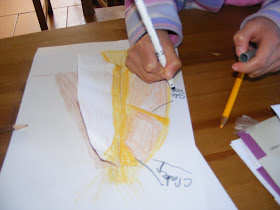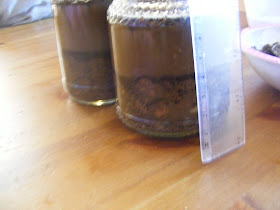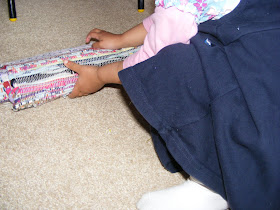I was offered the chance to review a product from The Old School House The Curiosity Files - Quicksand
This e-book is designed for ages 8-13 but we used it for 4 - 8 and I must say it was fairly easy to adapt for younger ages.
The unit included:
- Bible study and copywork
- Math (this did prove abit tough for DD6 so she skipped it)
- Geography
- Suggested Literature (and some great web links)
- Essay writing
- Spelling lists and vocabulary activities (set out by grade level)
- Science Experiments (including physics)
- Craft and activity ideas
- Mini Lapbook/notebook pages
- Singing activity
- Great discussion questions
- A Special Needs adaptation section
- And not forgetting an answer key for us oldies who need the help : )
For $6.95 that’s alot of e-book. You can purchase the e-book here and don't forget to check out the full curiosity files range - there are currently nine titles available covering everything weird and wonderful (from Zombie Fire Ants to Blue Diamonds) to spark your child’s imagination - some are even in the sale for $1 so grab a bargain : )
You start the exploration with Professor Ana Lyze (that got a real giggle from DD8) who poses and answers alot of questions about quicksand followed by a quick test to see what they absorbed.
We played around with the layout slightly here and introduced the hands on quicksand activity next (as quicksand is something they haven't encountered before and I wanted them to really grasp it before we tackled the Bible work.)
As you can see DD4 wanted to 'discover' what it was like to tread on quicksand (aka play)
DD2 got very upset when they used her giraffe as a prop - she spent ages trying to pull it out.
We then moved back to the structure and did our bible and character studies including some amazing copywork (also in cursive).
Math was suitable for DD8 and it challenged her nicely but DD6 skipped this.
We then left DD8 to her writing exercise and spelling while DD6 used the wordsearch/crossword and DD4 and DD2 opted to do some of the craft activities - TIP - when making sand crafts use a plastic sheet for the floor at its a real pain to clean sand out of carpets : )
We joined together again for the science experiments - they loved the surface tension activity
followed by the geography activity then finished up by leaning the song and utilizing the craft ideas.(but I learned my lesson and we did the remaining sand crafts outside!)
followed by the geography activity then finished up by leaning the song and utilizing the craft ideas.(but I learned my lesson and we did the remaining sand crafts outside!)
So what did I love about this product:
- Although designed for ages 8-13 it is easily adaptable for younger siblings who want to 'do school' with their big sister.
- It is a true unit study (and one of the better ones I've used) as it covers all areas of the curriculum.
- They provided some great links to encourage further independant investigation and research.
- Ease of use - just print and go (without too much prep from me - BIG PLUS)
- The Bible studies section was full of thought provoking questions.
- Hands on learning - which always goes down well in our house.
Is there anything I would change about this product? Not really, although a few more titles would be nice then I could have a whole terms work with no prep :) (we can all dream)
Disclaimer
This product was provided free to me for the purpose of review. I was not paid for this review and all opinions are my own.





















































